For countless travellers visiting Canada, spotting a wild grizzly bear is the ultimate bucket-list moment. Recently in Campbell River, BC, we were able to do just that, at a safe distance in their natural habitat, with the assistance of knowledgeable guides.
It was truly a magical and, honestly, quite surreal experience.
I’ve lived in British Columbia for more than a decade and have explored the province pretty extensively, both frontcountry and backcountry. Over the years, we’ve spotted wild grizzly and black bears from our vehicle and on hiking trails, and have also joined almost a dozen wildlife tours.
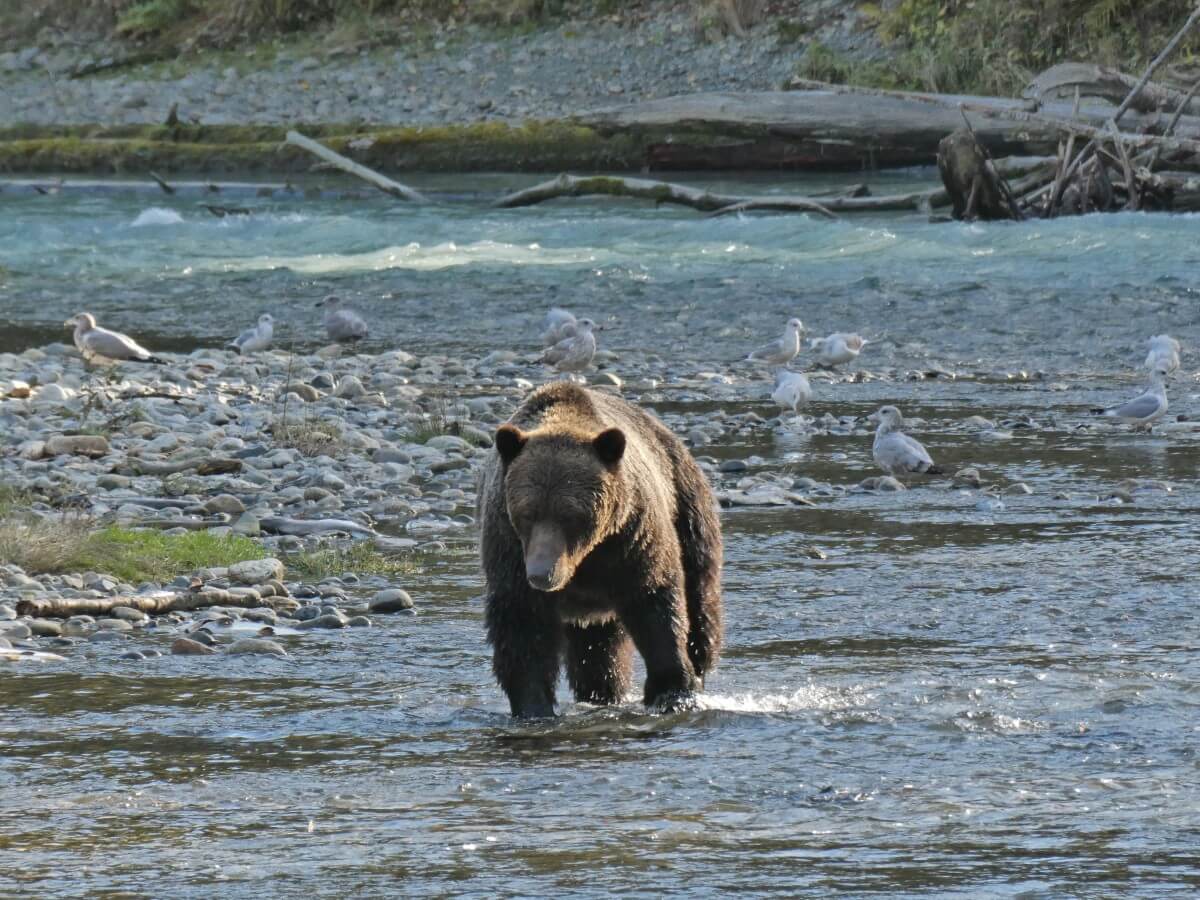
With all that in mind, I think grizzly bear watching from Campbell River is the best way to see wild bears in Canada.
The tours are convenient (leave right from the city), fit perfectly into one day (easy logistics), offer the incredible chance to see grizzlies in their natural habitat and also learn about local First Nation culture. It’s a much, much more comfortable way to view grizzly bears than by accident.
The one catch? You need to time it right – from late August to early/mid October.
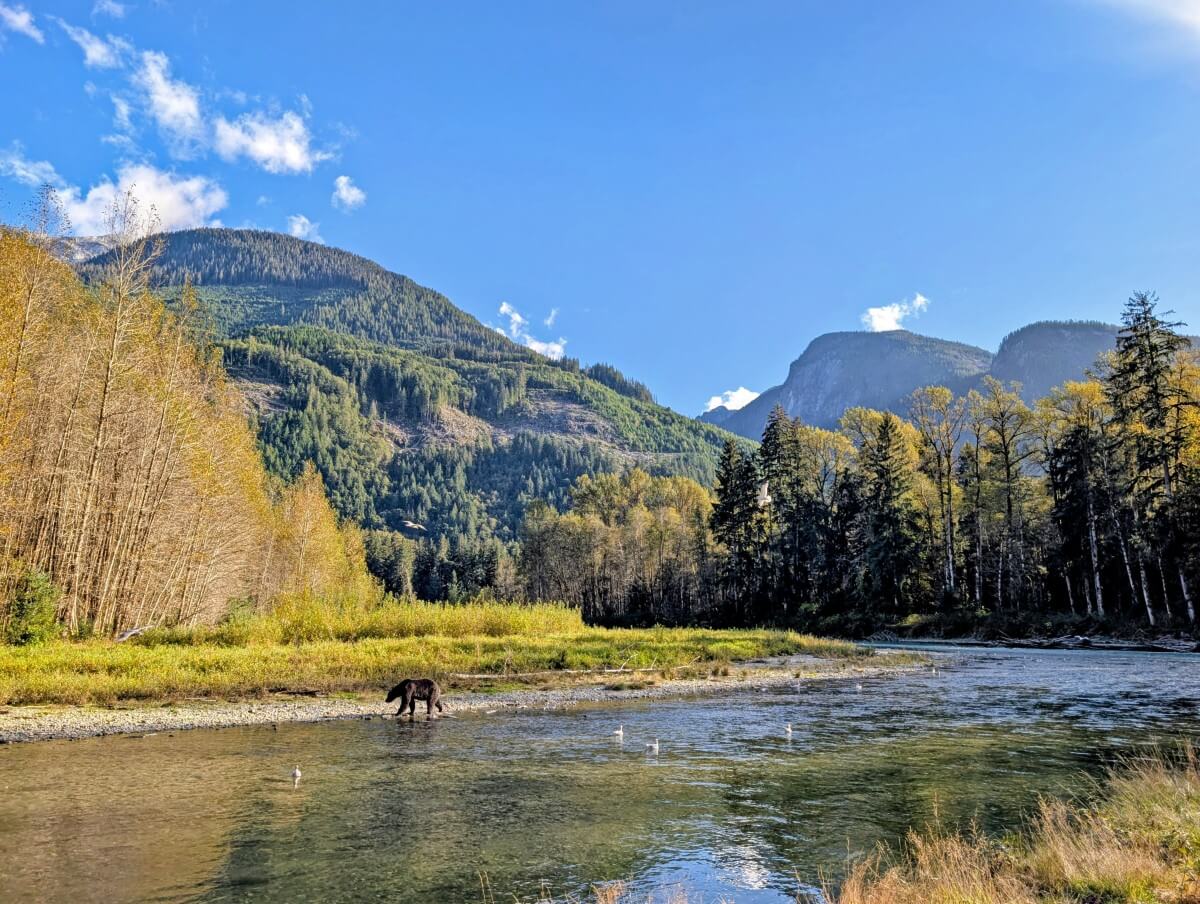
On the ethical side of things, all tour operators are part of the Commercial Bear Viewing Association of BC which ensures sustainable bear viewing, safeguarding both guests and bears as well as their ecosystem.
In this post, I’ll explain more about grizzly bear tours from Campbell River, the actual tour experience and the Commercial Bear Viewing Association. I’ll also share my favourite places to stay in Campbell River and other great things to do in town.
In partnership with Destination Campbell River and Destination BC. There may be affiliate links below. If you click and make a purchase, we may receive a percentage of the sale.
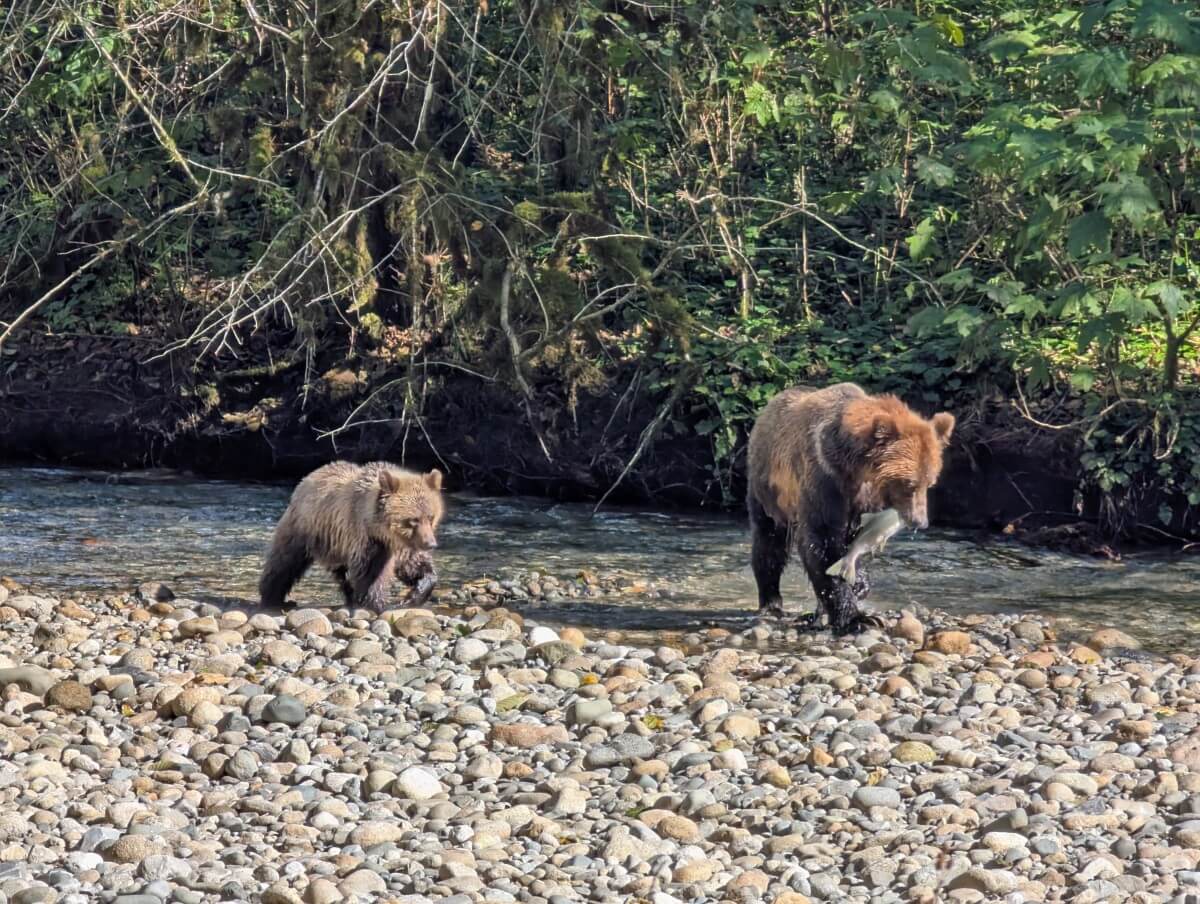
Grizzly bear watching from Campbell River, Vancouver Island
Campbell River is a small city on Vancouver Island, British Columbia, Canada.
Despite being located on an island filled with black bears, Campbell River is an excellent place to go grizzly bear watching. It is the nearest city to two mainland inlets (fjords) where grizzly bears are frequently seen in late summer and early autumn.
Toba Inlet and Bute Inlet are each about a two-hour boat ride from Campbell River, depending on weather and sea conditions.
In late summer and early autumn, grizzly bears descend from the mountains to the salmon-rich rivers along the coast, feasting and fattening up for the winter ahead.
Tours (boat/land combinations) are available to both Toba Inlet and Bute Inlet. This post focuses on Bute Inlet grizzly bear tours, as this is the one we experienced firsthand.
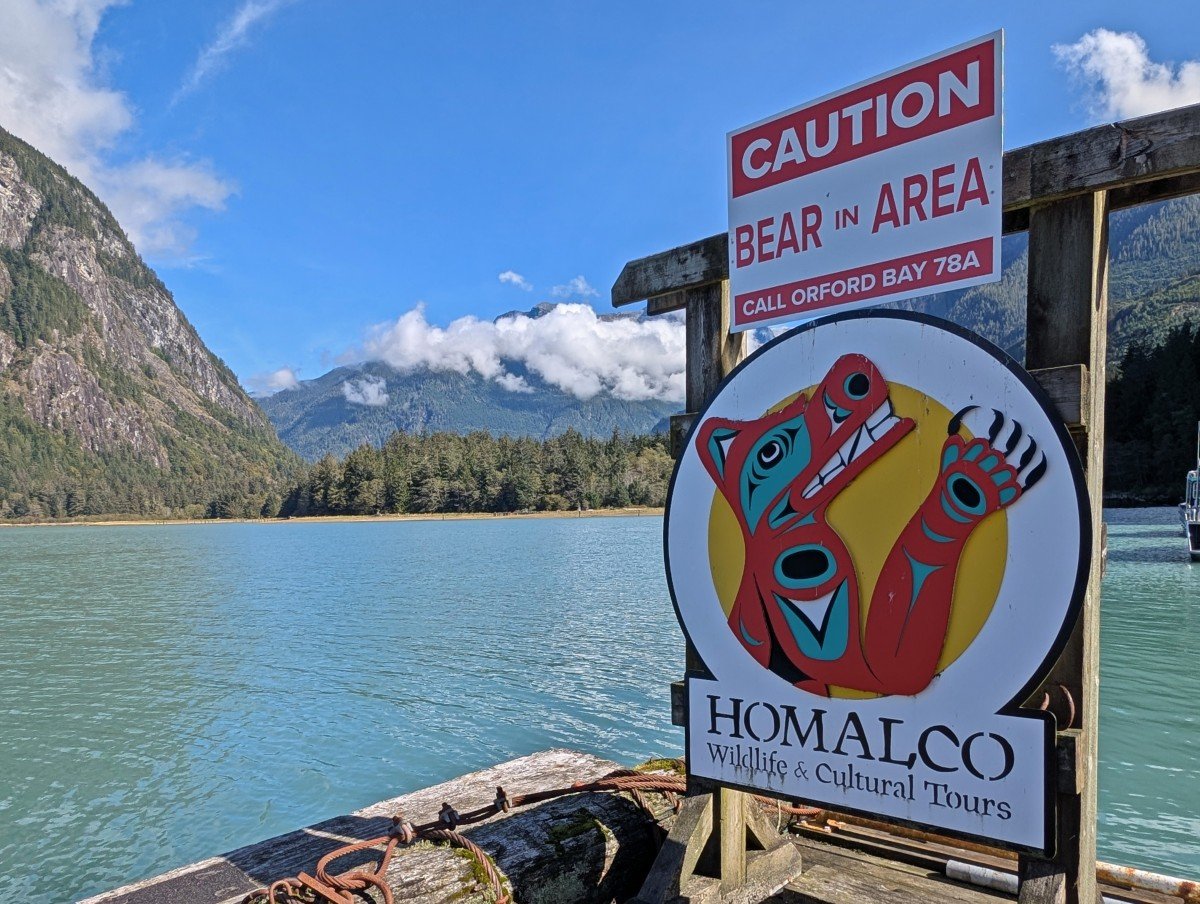
In general, however, Bute and Toba inlet tours are pretty similar. Both involve three hours of grizzly bear land viewing, led by local First Nation guides.
In Bute Inlet, the land portion of the tour is guided by the Homalco (Xwémalhkwu) First Nation, while in Toba Inlet, it’s run by the Klahoose First Nation (a sister nation of the Homalco).
According to local tour operators, Bute Inlet usually has more mothers and cubs while Toba Inlet is visited more often by male grizzlies. As for the scenery, both locations are absolutely stunning, with mountain views, waterfalls and steep bluffs. Bute is turquoise coloured, while Toba is more emerald.
What do I mean by land based grizzly bear watching? You’ll be viewing the bears from tower platforms or from a respectful distance on the riverbank. In my opinion, this makes for a much more intimate experience than any boat tour.
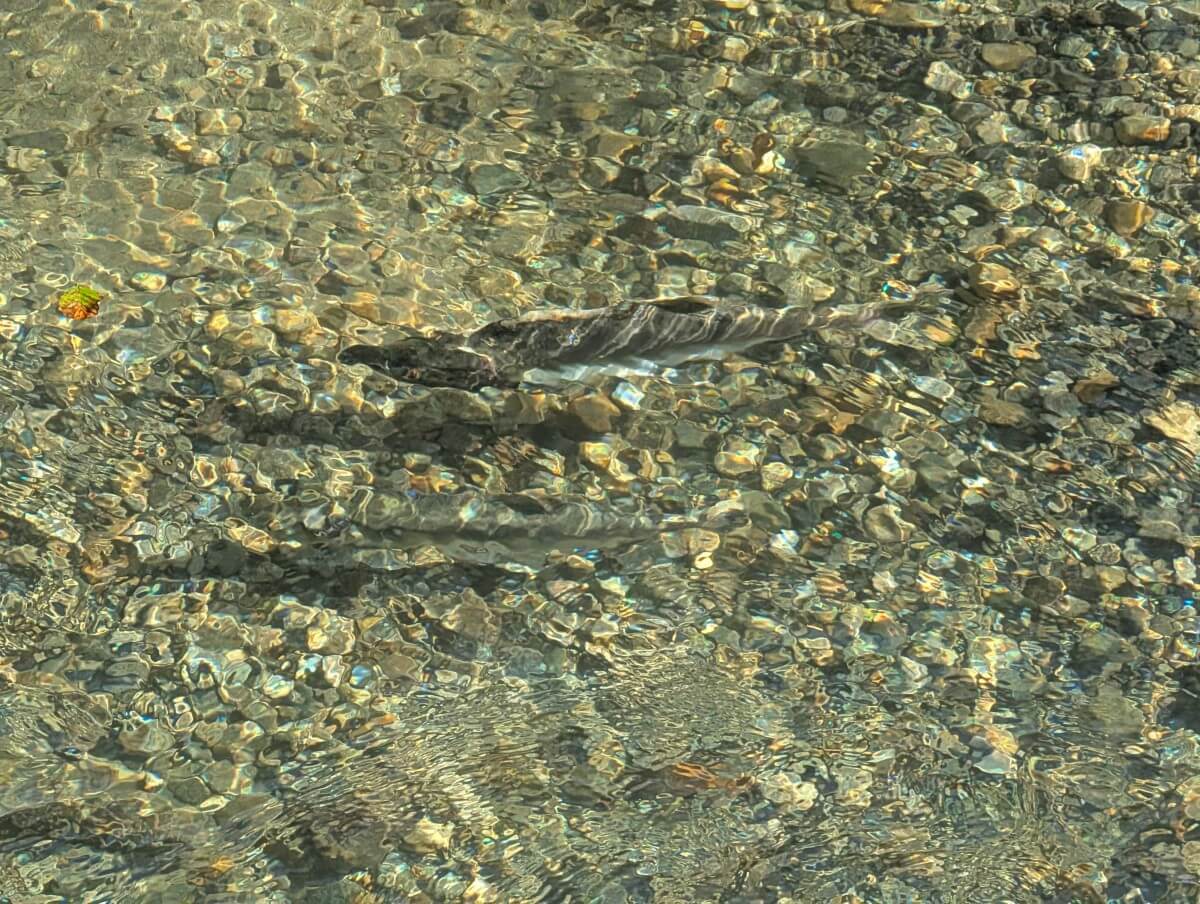
Campbell River grizzly bear tours
There are three companies offering grizzly bear tours to Bute Inlet from Campbell River:
- Big Animal Encounters
- Homalco Wildlife & Cultural Tours (100% Indigenous owned)
- Campbell River Whale Watching and Adventure Tours
Toba Inlet tours are operated by Homalco Wildlife & Cultural Tours, Campbell River Whale Watching and Eagle Eye Adventures.
Tour groups are small – around 12 people or less. Guests must be 10 years old or older. Lunch, snacks and drinks are provided. The boats are covered and usually have a marine toilet.
As mentioned above, the Xwémalhkwu (Homalco) First Nation operate the land based portion of the Bute Inlet tour. This means that no matter which tour company you book with, the grizzly bear watching section is led by local Xwémalhkwu guides.
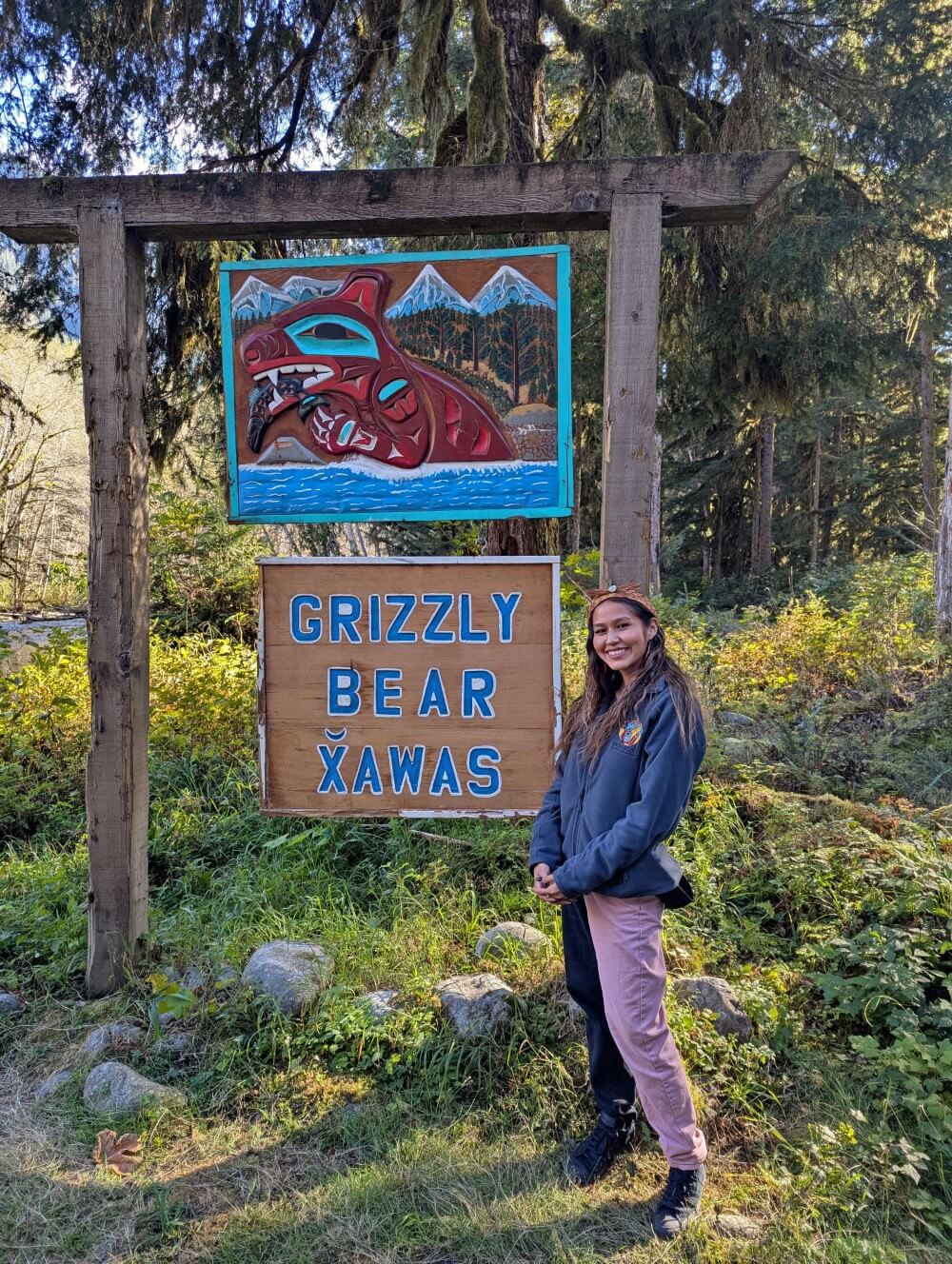
Tour boats arrive at the Orford Bay dock in Bute Inlet. Orford Bay, or Pi7pknech, was once a winter village site for the Xwémalhkwu. It it now hosts a salmon hatchery and a grizzly bear conservation area.
With the distance in mind, Campbell River grizzly bear tours are around 7 to 9 hours long, typically starting early (around 7.30am) or late morning (10.30/11am).
Expect to spend at least two hours on the boat to reach Orford Bay on Bute Inlet and two hours on the way back. Tour operators usually factor in some time to watch whales and other marine wildlife on the way as well as a lunch break.
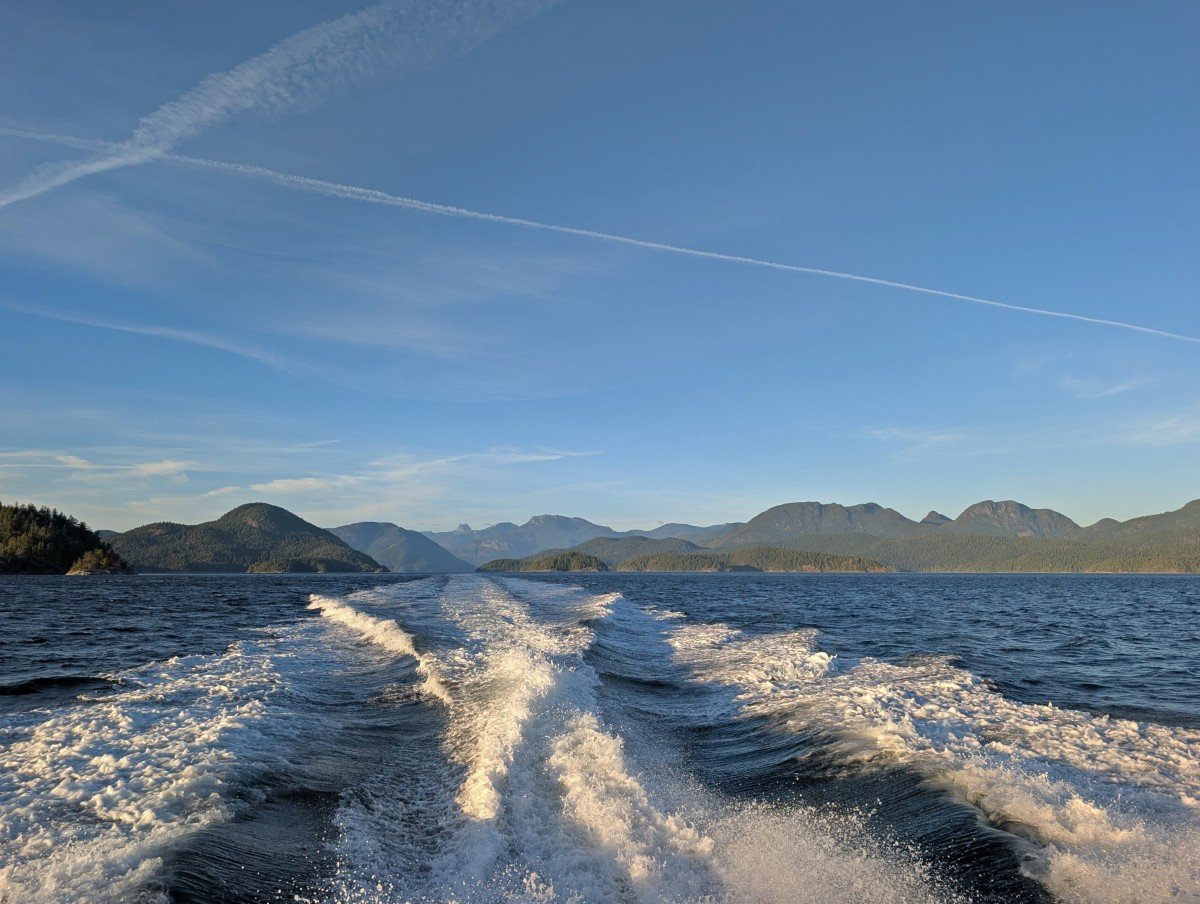
The best time to go
The Bute Inlet grizzly bear tour season runs from late August to early/mid October. The prime time is September, with the highest number of bears recorded during this month. The grizzlies are feasting on salmon throughout the month.
Late August can still be a good time to go. The weather is generally warmer. Depending on the timing of the salmon run, the grizzlies may be foraging on berries, shellfish and grasses instead while they wait.
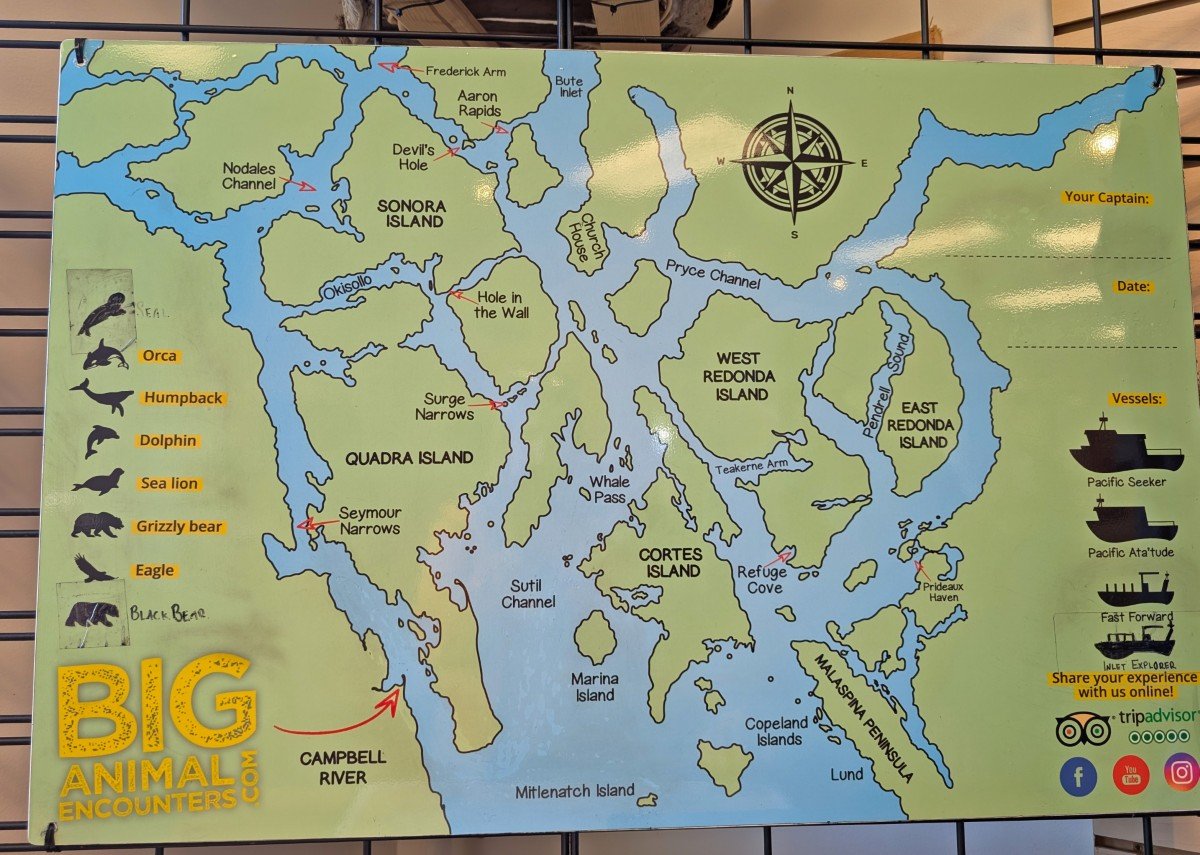
October is a quieter time to join a tour. The weather is cooler and the days shorter. Some tour operators offer reduced rates during this time.
It’s possible to see whales at any point during the tour season. Humpbacks are a common sight along with sealions and seals – we saw quite a few. Orcas, white-sided dolphins and porpoises are also sometimes spotted, as well as black bears on the shoreline.
Visiting Vancouver Island before the Bute Inlet grizzly bear watching season begins? Tide Rip Grizzly Adventures operates tours from Telegraph Cove, about two hours drive north of Campbell River. This full day tour is entirely boat-based, offering a different experience but is a great alternative if the Bute salmon season doesn’t align with your schedule.
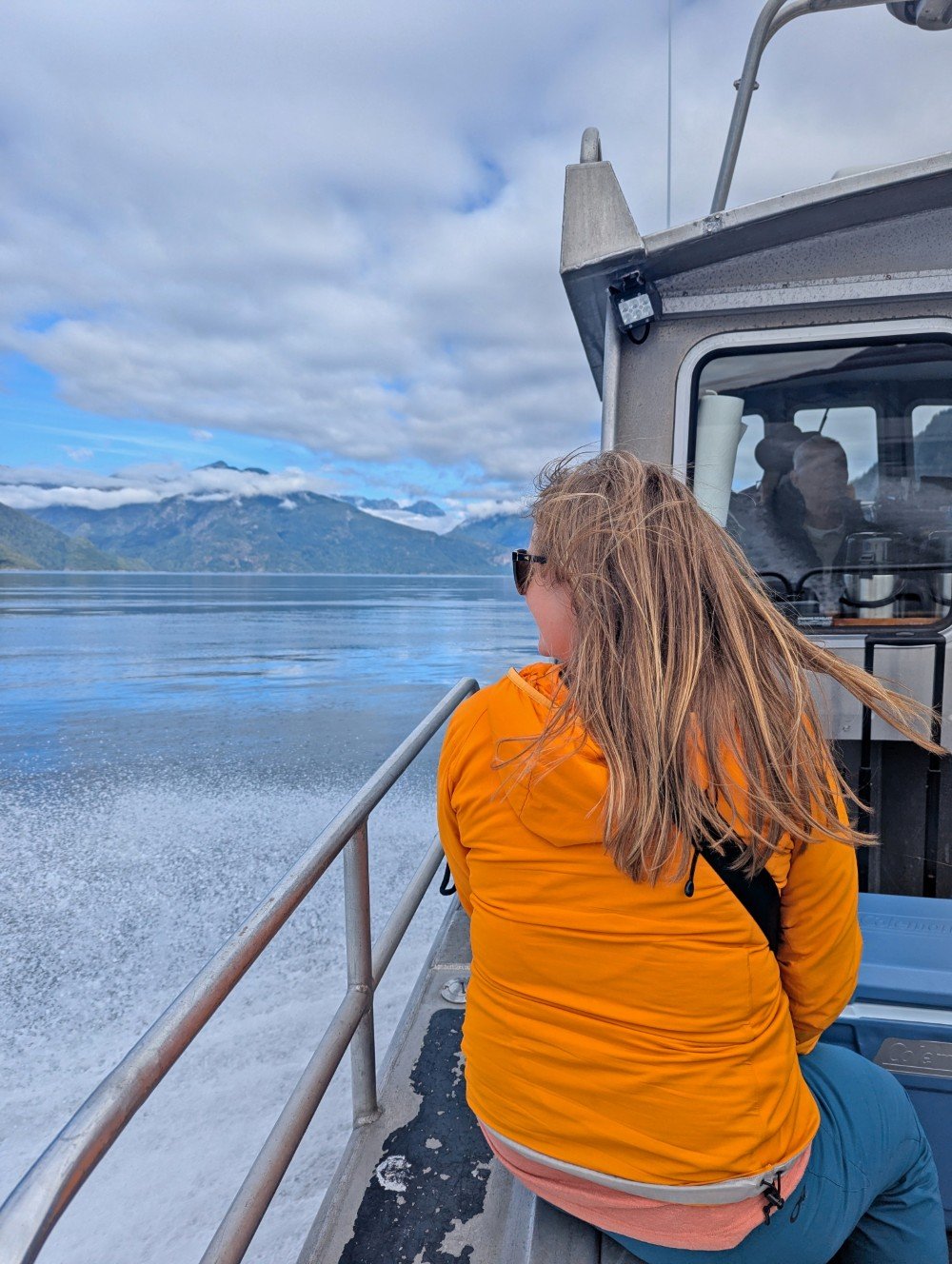
The tour experience
Our tour was with Big Animal Encounters, leaving from the Discovery Harbour Marina on the north side of Campbell River. Captain Paul, hailing from Ahousaht First Nation near Tofino, told us that it was his 20th season.
The journey to Orford Bay took around 2.5 hours (90km), with a few stops along the way to watch humpback whales and get a close-up view of a waterfall.
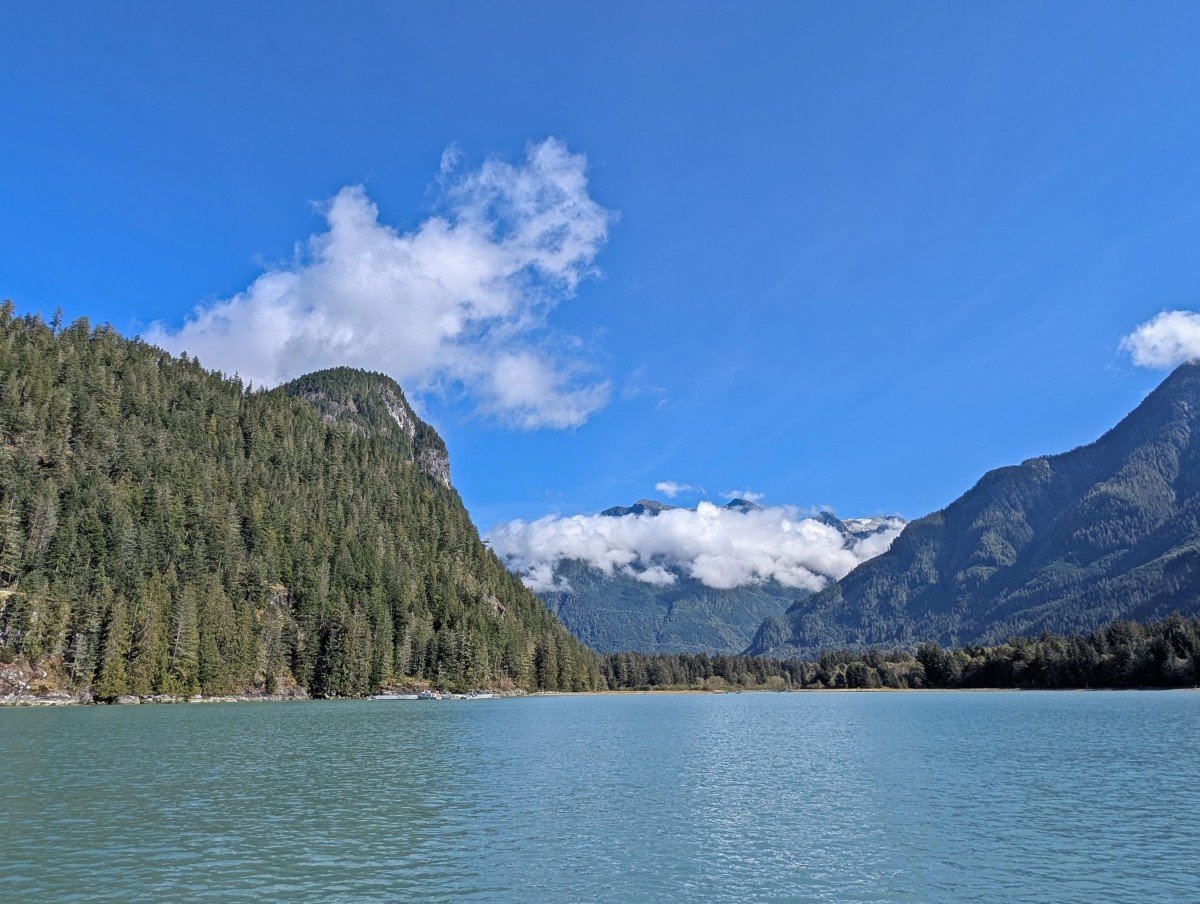
Cruising into Bute Inlet on such a sunny day felt like a dream, with only the tips of the steep forested mountains covered by wispy clouds. Carved by glaciers, Bute Inlet is one of the deepest fjords in BC (660m).
Pulling up to the wharf at Orford Bay, we were given 45 minutes to eat lunch and enjoy the stunning views before starting the land based portion of the tour.
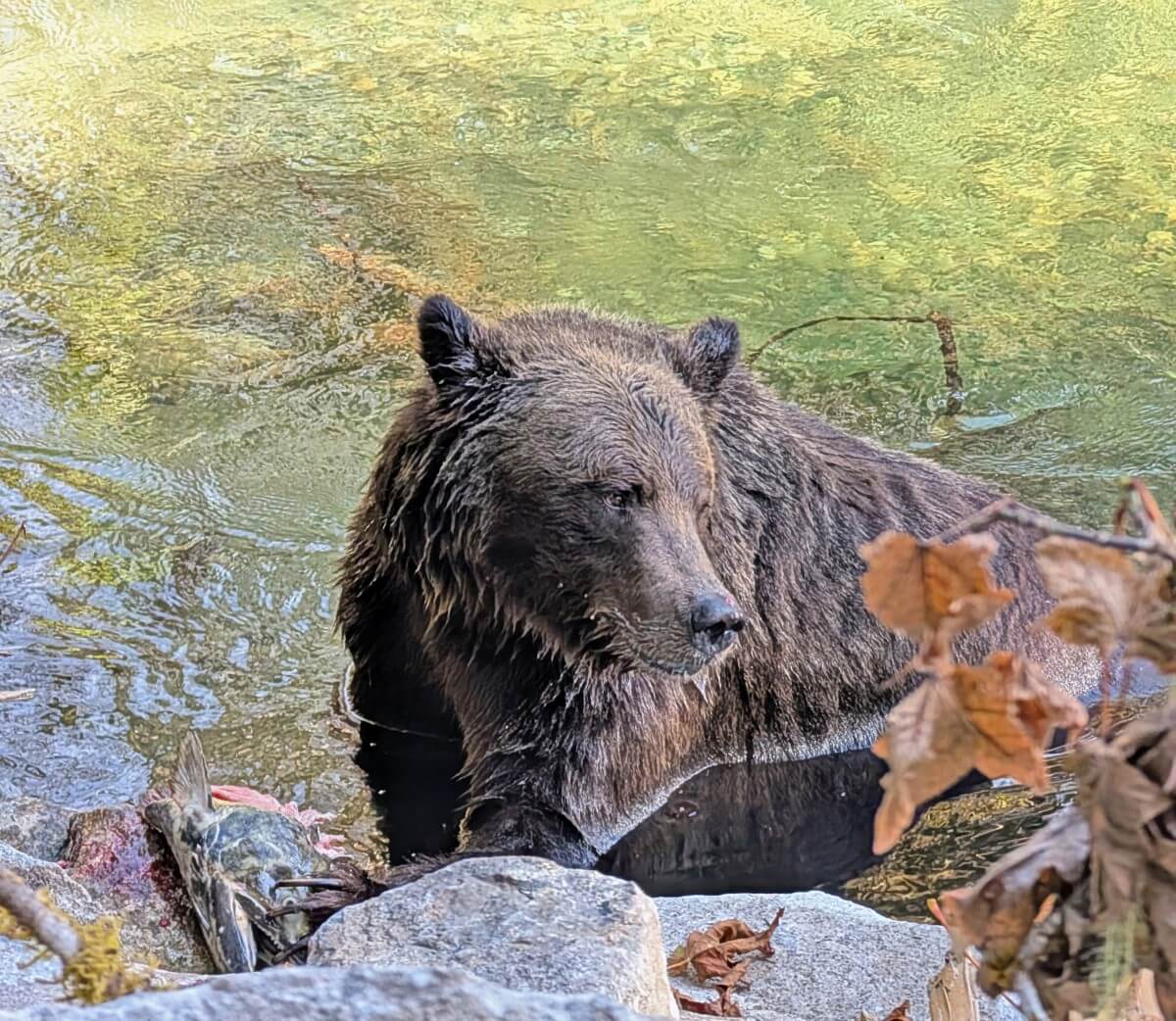
Several buses pulled up and Wilson and Kaylen introduced themselves as our guides. Joining our group was another boat tour, though we remained split on different buses. Everyone convened at the Homalco information centre, where we were invited to use the facilities and check out the exhibits.
And then it was time to see some grizzlies! There are five viewing areas along the Orford and Algard rivers, most with towers. We had no luck at the first two spots. And then…success.
It was truly surreal to disembark the bus and be able to immediately see the huge, tufted brown ears of a singular grizzly bear in the middle of the river, trying to find trapped salmon in the sweepers. A few minutes later, another grizzly wandered into view upstream, accompanied by a cub.
We stood on the riverbank in awe, watching these grizzlies completely involve themselves in the task of finding and eating salmon. The first bear gradually moved closer and closer to us, though never once made any sign they were bothered we were there.
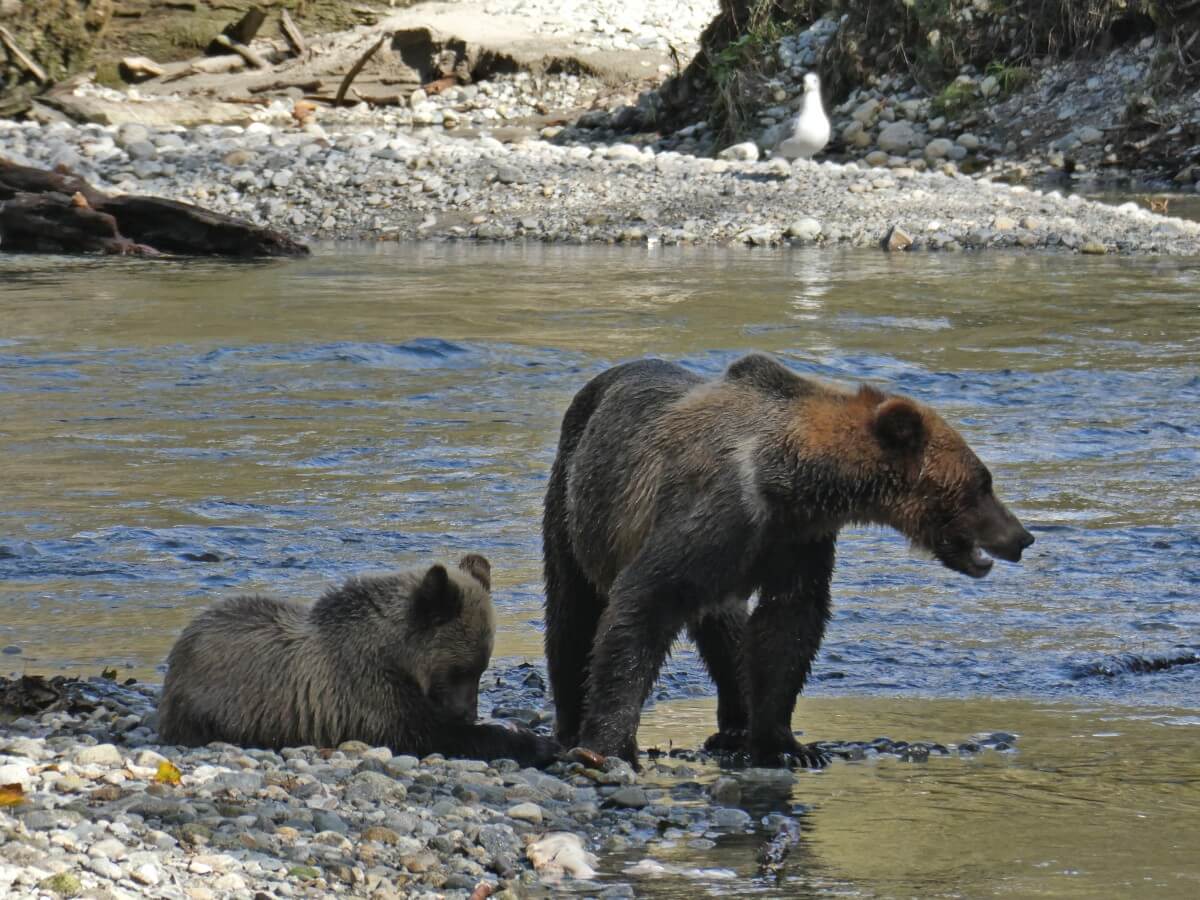
For the next 2.5 hours, we watched a total of 13 bears at three different locations. One time, we watched one bear for 20 minutes straight. I’ve never experienced such a quiet, respectful tour group in my life. The guides were also impressed – a good day usually involves 6 to 8 grizzlies.
Our Campbell River grizzly bear tour wasn’t just about watching the bears – we learned a lot too. Besides the ‘bare’ facts of bear biology (sorry, a pun was unavoidable), our guides explained the important place they hold in the balance of the coastal ecosystem and also shared some Homalco cultural stories.
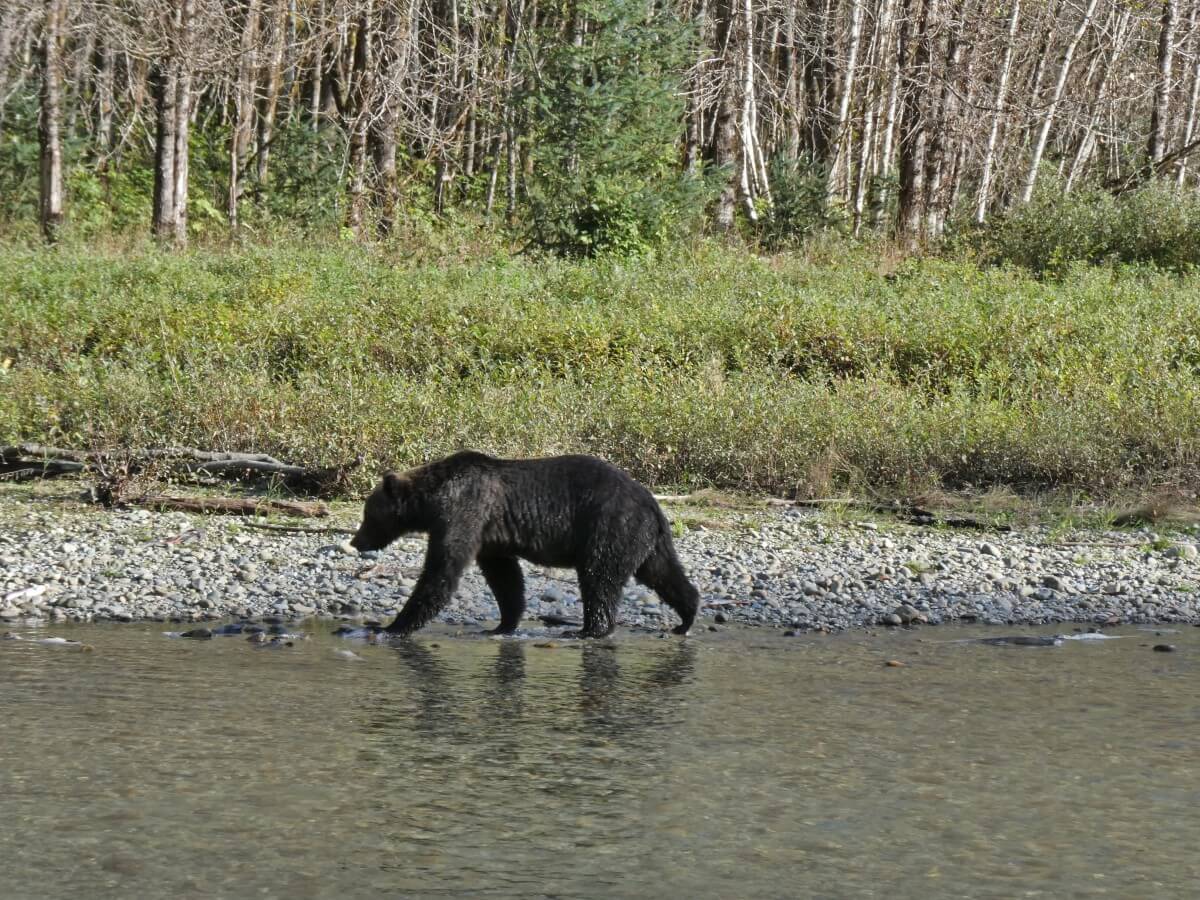
Price
Let’s be clear, grizzly bear watching from Campbell River is not a cheap activity. A full day tour to Bute Inlet is around $500-600 per person. The final tour price depends on the tour operator and/or time of the season.
Do I think it is worth it? Unequivocally, yes, if you want to see wild grizzly bears.
As with any wildlife tour, there are no guarantees. That said, the chances of seeing grizzly bears on a Bute Inlet tour are very high. During our trip, we spotted a total of 13 bears across 15 sightings – a particularly impressive result according to our guides.
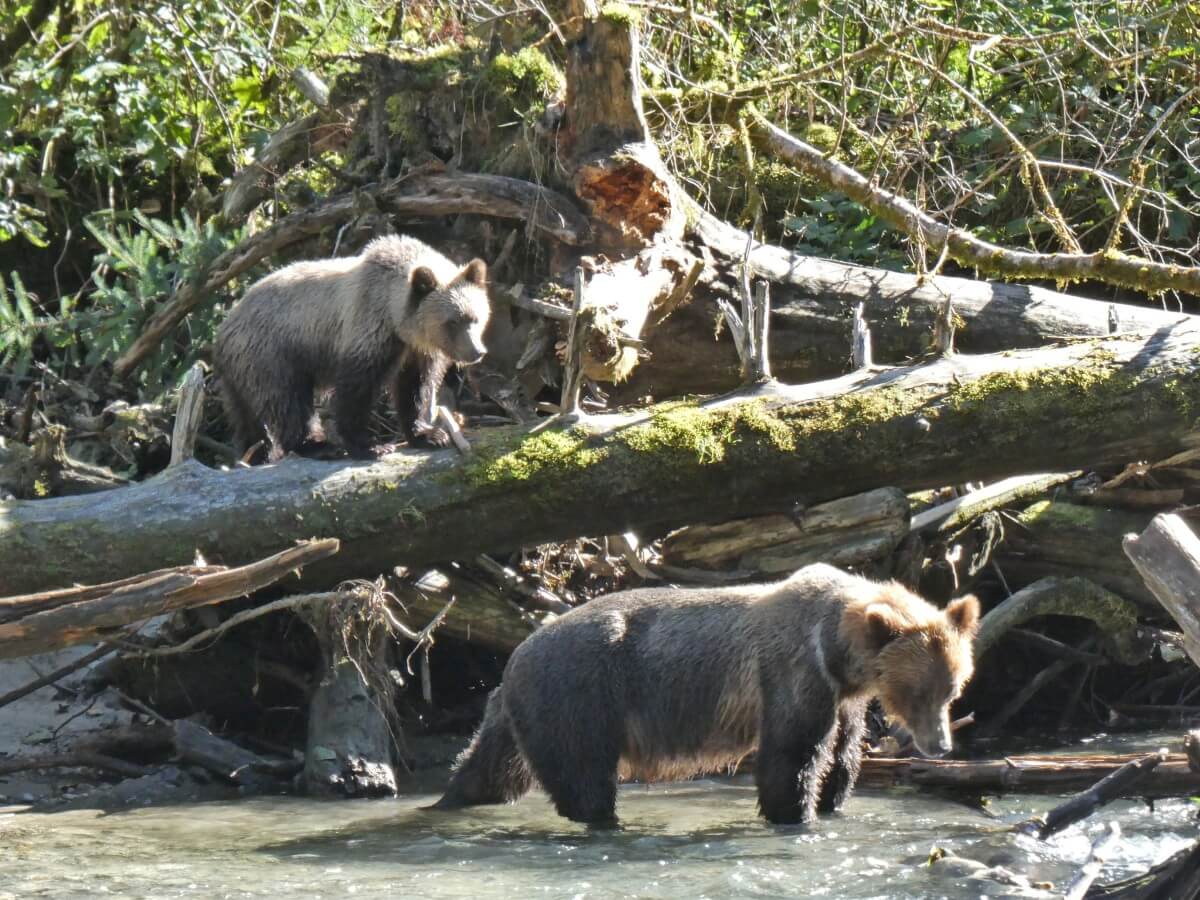
JR and I spend a lot of time in the backcountry and actively practice how to avoid negative bear encounters (making noise, keeping a clean camp etc). While I love to see bears, I also don’t want to see them at close range.
To be able to join this tour and stand at the side of a river and watch 500-600lb grizzly bears do their thing and not care about us…honestly, it was both humbling and exhilarating. It was such a privilege to be able to watch them from such relative safety and I was left in total awe of their power and grace.
Joining a grizzly bear tour from Campbell RIver was a dream for me and it lived up to my high expectations. A truly special experience that I will never forget!
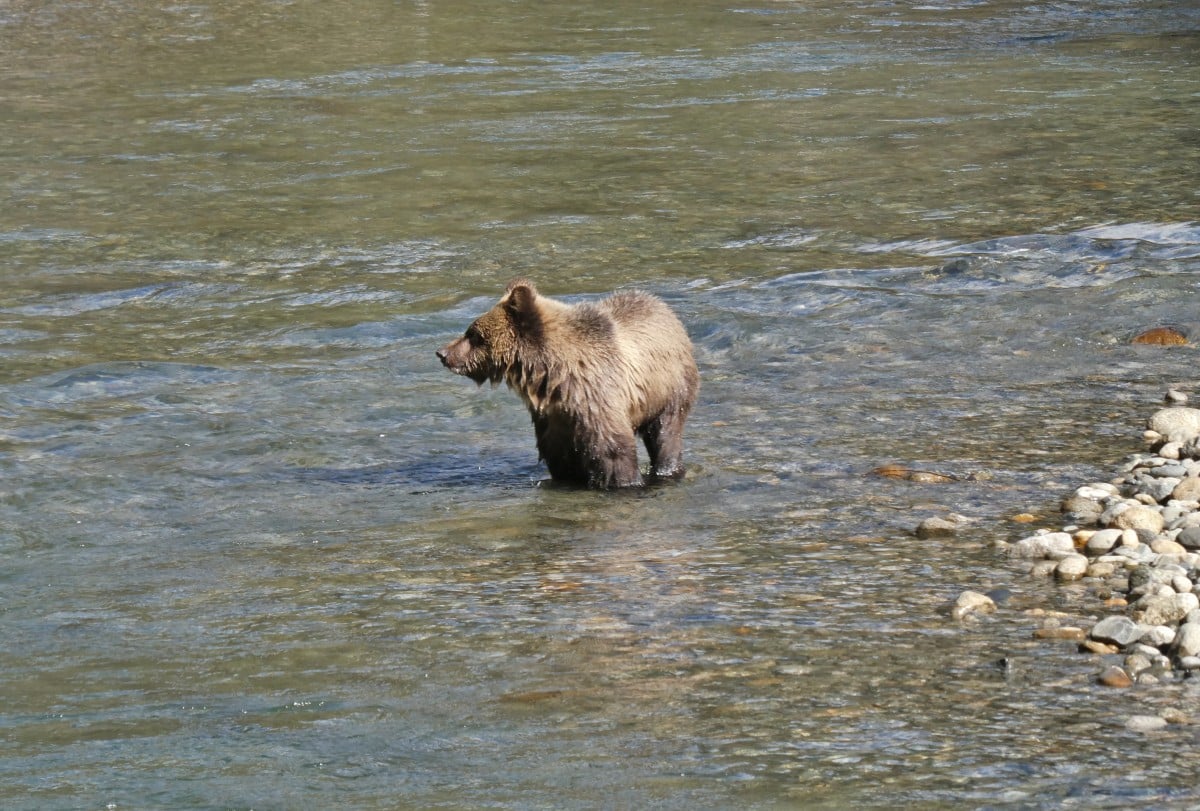
What to bring and wear
Travelling to Bute Inlet is a full day adventure so be sure to bring everything you need to stay comfortable. I’d recommend:
- Layers. Even on a hot day, it can be chilly on the water, so bring a long-sleeved top and a jacket. The riverside grizzly bear watching areas are mostly shaded so it doesn’t get too warm there either.
- Closed-toe shoes. With so many possible weather conditions, closed-toe shoes are best for this tour
- Sunscreen, sunhat and sunglasses. Even if it’s cloudy when you leave Campbell River, there is a chance that it may be a lot sunnier closer to Bute Inlet
- Buff/warm hat/gloves. If you want to spend some time on the boat deck, bring these accessories to stay warm
- Water. While refreshments will be available on the boat, it’s a good idea to bring your own water bottle
- Snacks. Lunch is provided but you may want to bring some of your own food as it is long day. Keep in mind that no food and drink is allowed on the buses (only water)
- Camera. If you have a telephoto camera, great! If not, don’t worry. Close encounters are common on this tour. All of the photos in this post were taken with my smartphone or point and shoot camera
- Binoculars. Likewise, if you have your own binoculars, bring them. We borrowed some from our tour operator
One aspect I didn’t consider much before the tour was the smell of the land based section – with so many dead salmon around, it is a little stinky! Something to keep in mind if you’re sensitive to smells.
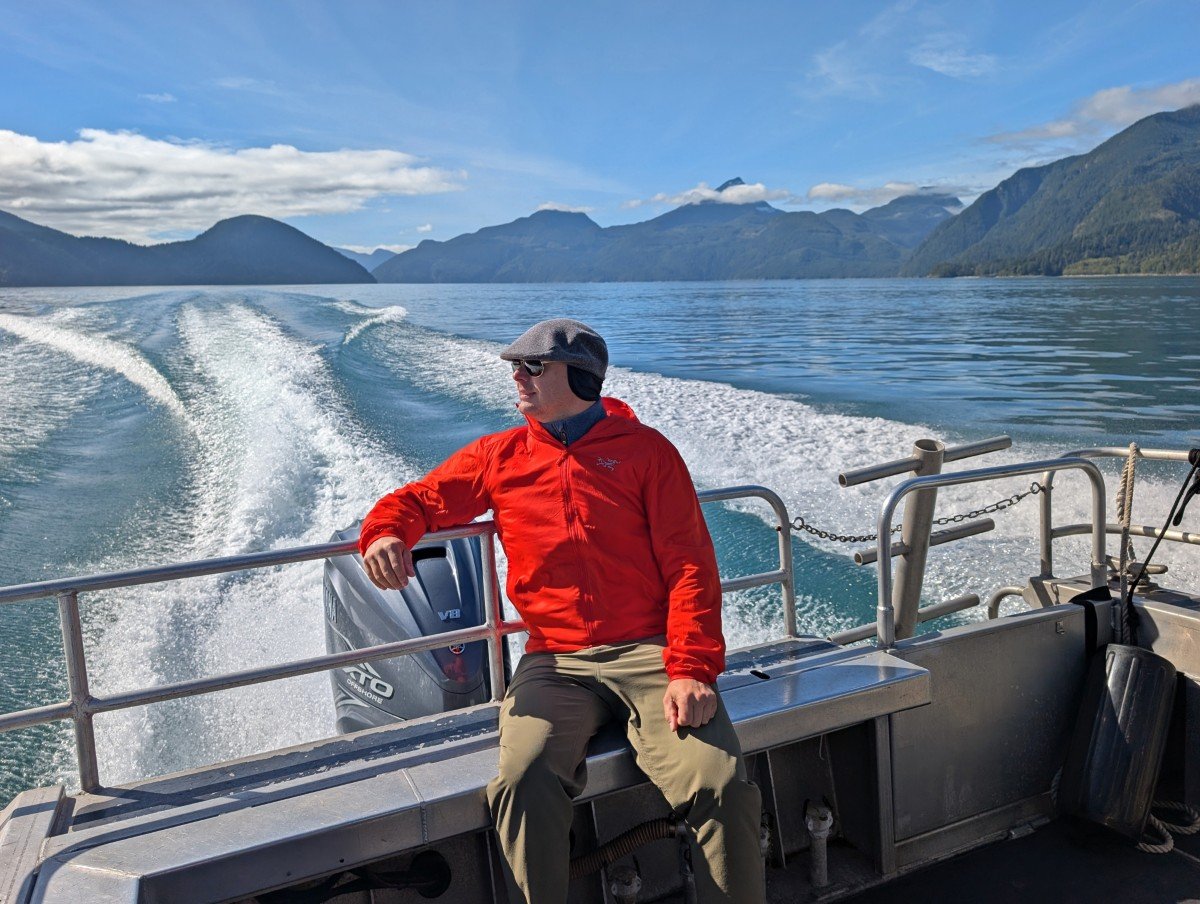
The Commercial Bear Viewing Association
JR and I are very selective when it comes to activities related to animals. For instance, even after spending more than five months in Thailand, we have never visited an elephant sanctuary. We also choose dive tour companies with great care, and I would never pay to swim with dolphins.
Needless to say, animal watching ethics are important to us. Enter the Commercial Bear Viewing Association of British Columbia (CBVA).
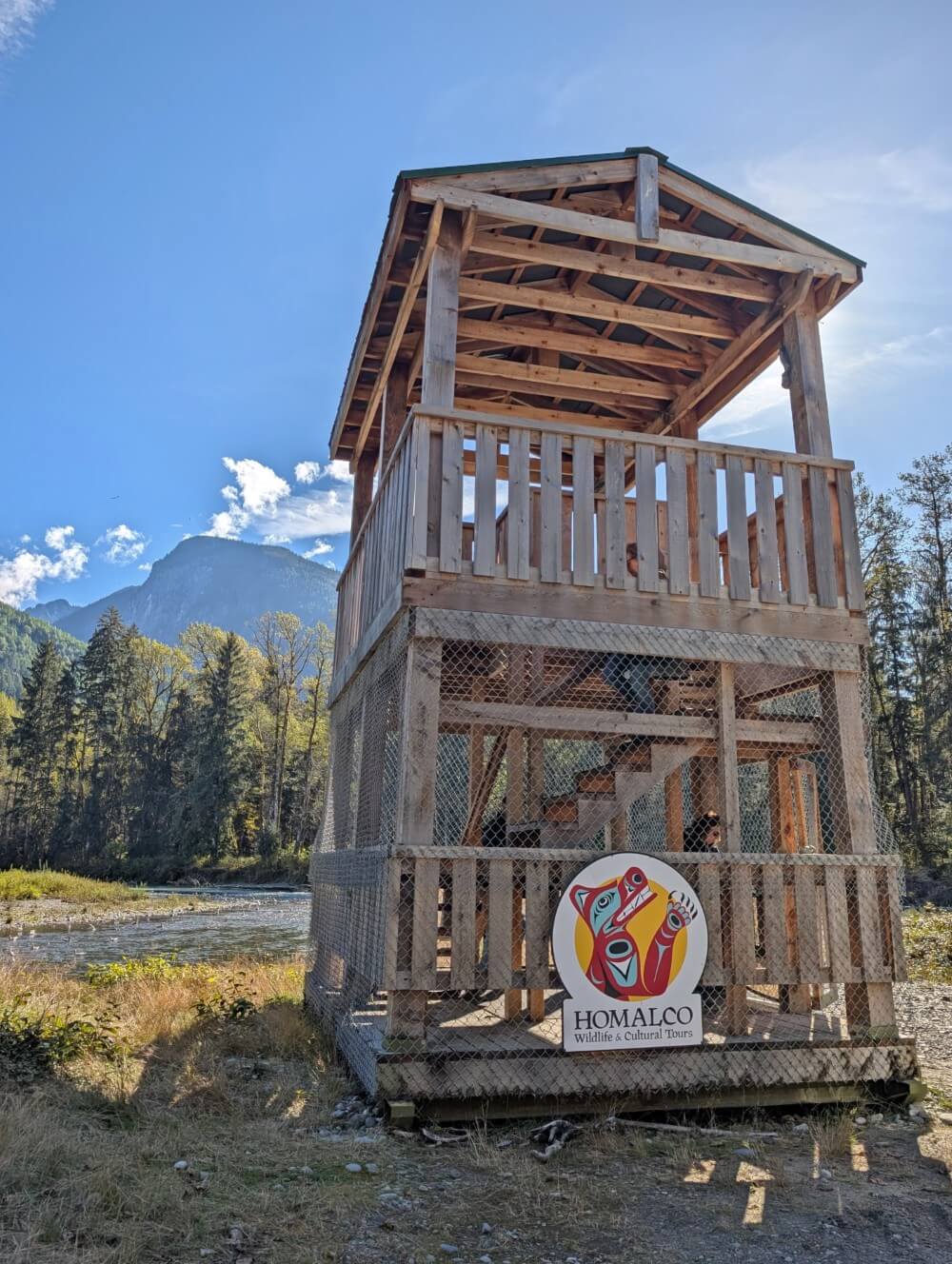
The CBVA currently represents 26 members dedicated to protecting wild bears and their ecosystems. All must follow Best Management Practices and Code of Conduct to ensure the highest standards of ethical and sustainable bear viewing, for both guests and bears.
Low impact viewing is the key. The bears need to be able to feed, rest and travel without any interruption from humans. CBVA’s Best Management Practices are adaptive – if negative outcomes are seen, viewing behaviour is modified.
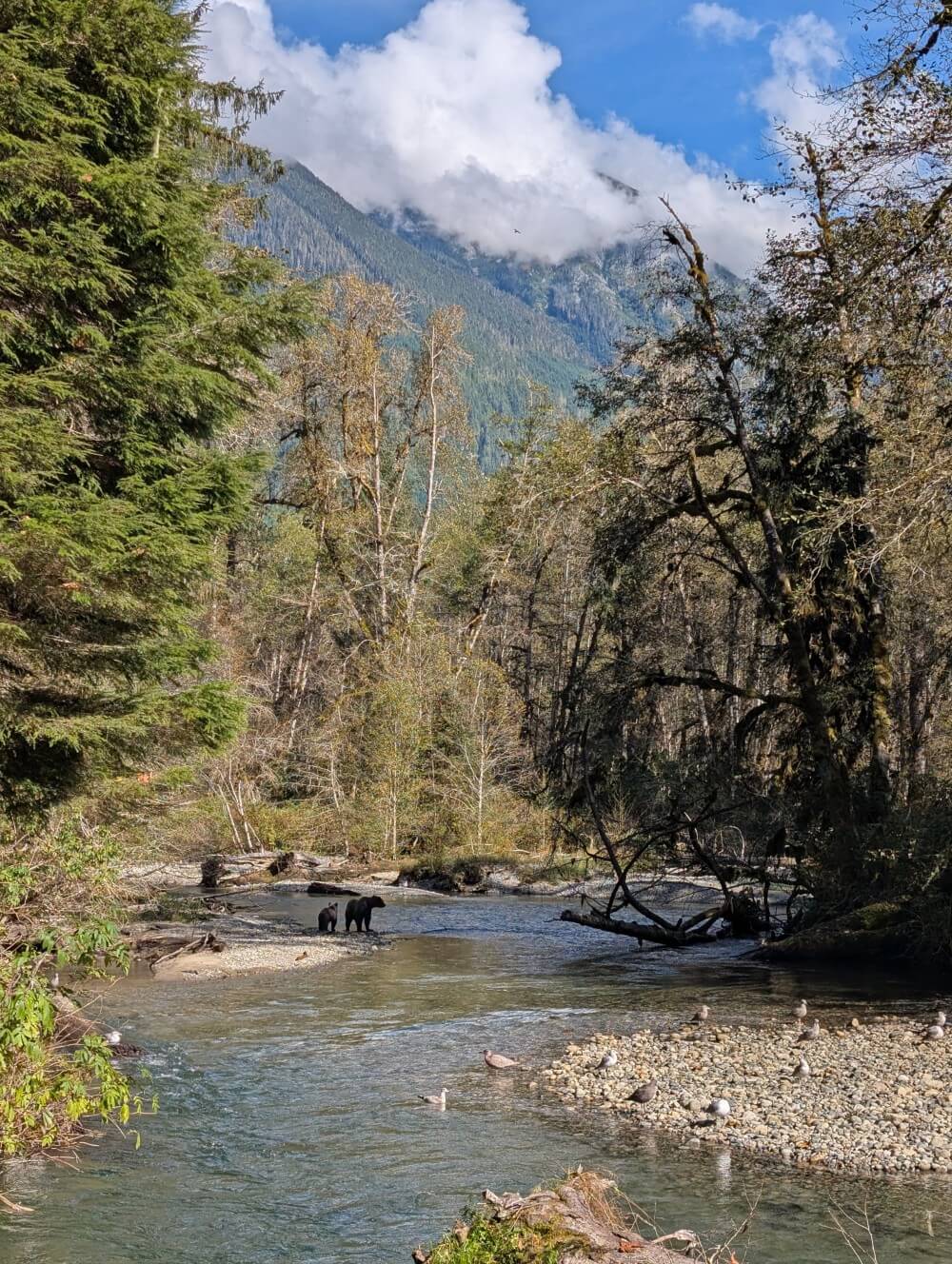
There is a certification program for guides. The Level 1 program, for example, includes bear biology, ecology, behaviour, bear/human encounters, minimising effects, guest education and more. By the time a guide reaches Level 3 certification, they must log more than 350 hours of bear interaction.
When joining a CBVA member tour, expect the following:
- Knowledgeable guides – Understanding of bear behaviour and boundaries
- Minimal disturbance – Guides promote quiet viewing with limited noise and movement
- Respectful viewing from a distance – Ensuring that bears have personal space
- Group safety – Guests stay in a small, close group and follow guide instructions at all times
- Organised visitation – Careful coordination with other tour groups to avoid overcrowding
- Controlled food and waste – Bears cannot gain access to food and trash
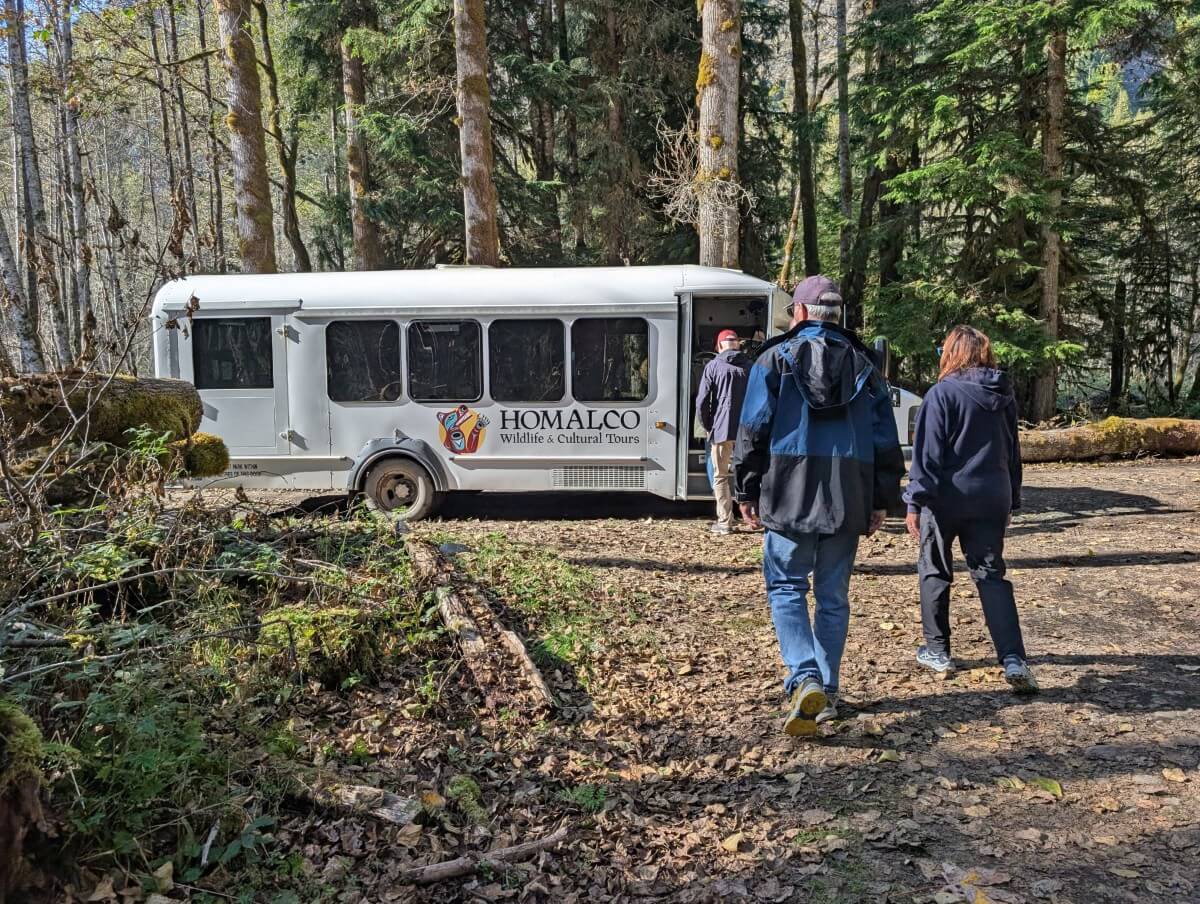
Visiting Campbell River: Essential guide
After booking your grizzly bear tour, it’s time to plan the rest of your Campbell River adventure.
How to get to Campbell River
Campbell River has its own airport (YBL), mostly welcoming small planes from Vancouver on Pacific Coastal Airlines.
Comox Airport (YQQ) offers a wider selection of flights, with service from Air Canada, WestJet and Pacific Coastal Airlines. Rental vehicles are available in the airport. It takes around 45 minutes (57km) to drive to Campbell River from Comox Airport.
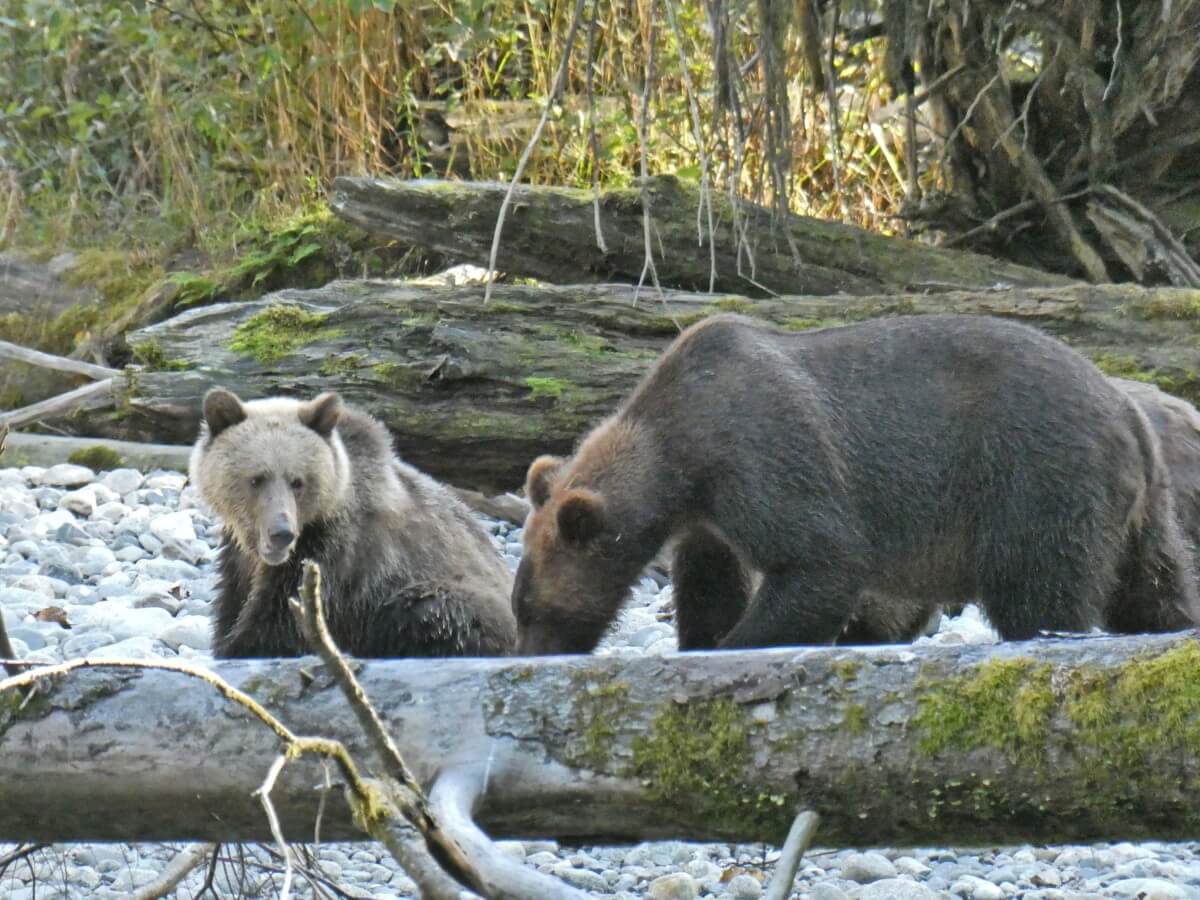
We flew to Comox from Kelowna, via Edmonton on the way there and Vancouver on the way back.
Driving to Campbell River is easy – it takes only 1 hour 40 minutes to reach the city from the Departure Bay Ferry Terminal in Nanaimo (153km). The fastest route is along Highway 19, a well-maintained divided road.

If you have the time, I’d suggest taking the scenic 19A instead – it borders the ocean for some long stretches, with views of snow capped mountains. Our road trip guide shares all of the best places to stop along the way.
Driving distances from elsewhere on Vancouver Island:
- Courtenay – 40 minutes, 53km
- Tofino – 3 hours 30 minutes, 270km
- Victoria – 3 hours 15 minutes, 265km
- Port McNeill – 2 hours 10 minutes, 195km
Travelling to Vancouver Island for a dedicated trip? I’d recommend flying onto the island and renting a vehicle there. The ferry ride from the mainland is beautiful but keep in mind that it adds around 1.5 to 2 hours (plus waiting time), longer in the summer months.

Where to stay
Painter’s Lodge is Campbell River’s most iconic (and historical) hotel property, situated next to the ocean just north of town. It was recently purchased (2025) by a BC based hotel group, who will be improving the amenities while while preserving the lodge’s historic charm.
To the south of town, Anchor Inn and Suites is a solid accommodation pick. All guestrooms have ocean views with a balcony. It also has an on-site restaurant (with ocean views) as well as an indoor swimming pool and fitness centre.
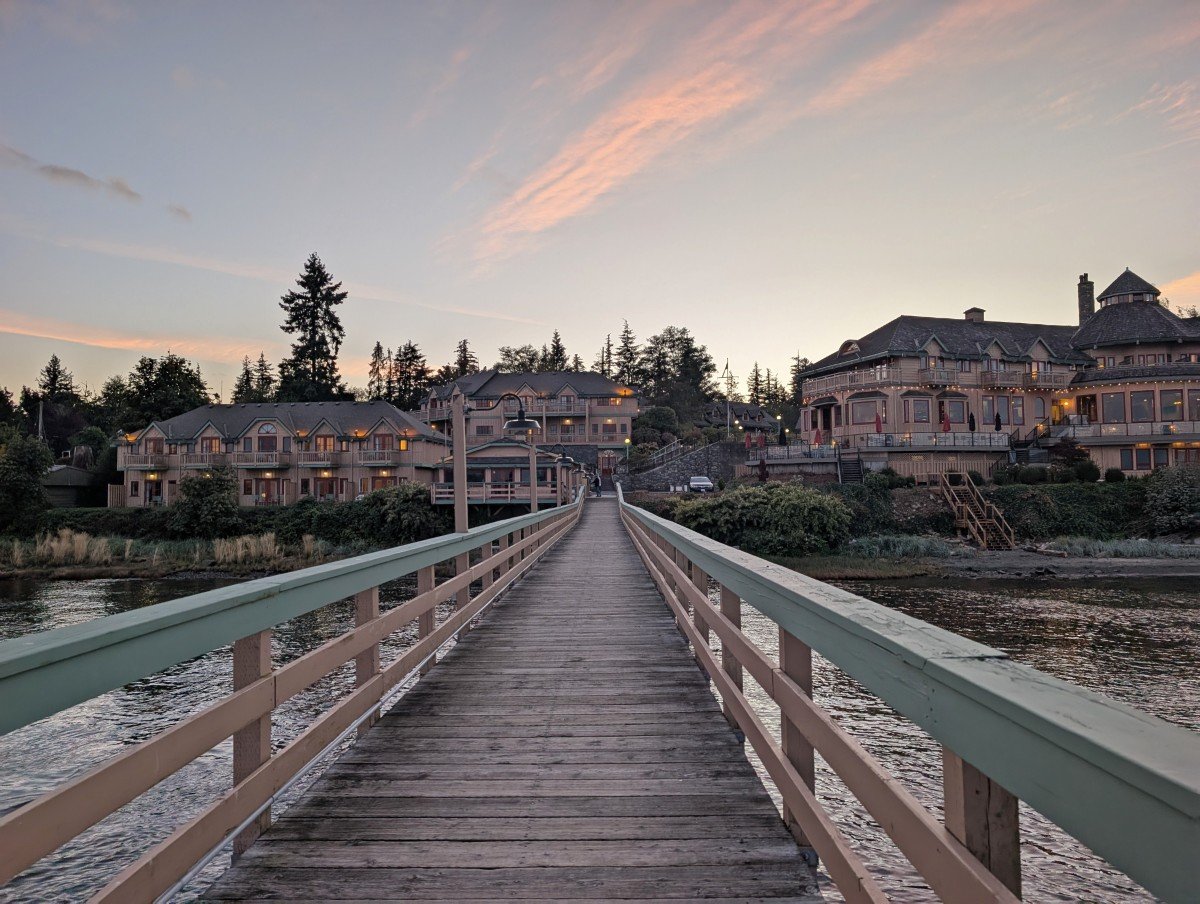
For camping, the most convenient place is Quinsam Campground in Elk Falls Provincial Park. It’s just a few kilometres from the city and is one of my favourite camping spots on Vancouver Island.
Located right next to the Quinsam River, there is a high chance to see wild black bears fishing for salmon while staying here.
Other great things to do in Campbell River
Beyond the grizzly bear tours, Campbell River itself is well worth a visit. It is located on the traditional territory of the We Wai Kai, Wei Wai Kum, and K’ómoks First Nations.
We love the Campbell River area so much that we actually tried to buy a house here in early 2025. While it didn’t work out, we will continue our annual visits anyway.
All of our local recommendations can be found in our dedicated Campbell River travel guide, but here are some highlights:
- Walk the free suspension bridge at Elk Falls
- Explore the local beaches
- Hike in Strathcona Provincial Park
- Stroll the Discovery Fishing Pier (rod and tackle rentals available in summer!)
- Buy fresh seafood at Crabby Bob’s
- Take in the views along the Rotary Seawalk by foot or cycle
Bear lovers must visit the Quinsam River Hatchery while in Campbell River. Not only a great place to learn about Pacific salmon and the ecosystem they help support, there is a high chance to see black bears fishing along the river in September and October.
For the ultimate in salmon-themed experiences, consider swimming with the salmon in the Campbell River itself. Oceanfix dive shop offers wet suit and snorkel rentals for the self-guided river run. It’s a fast, fun float down the river through the schools of salmon. We’ve never done anything else like it before!
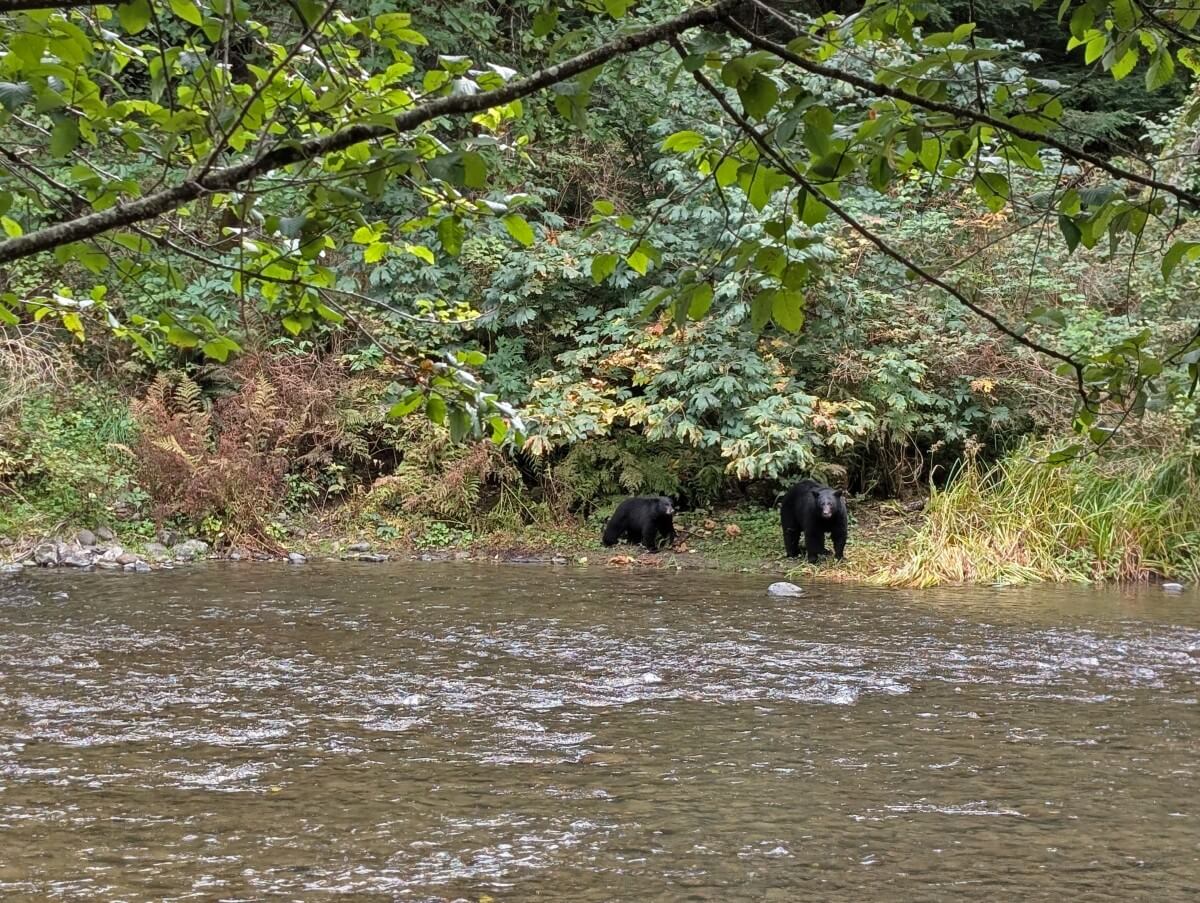
Where to eat
Campbell River’s dining scene is on the up and up. It’s changed a lot since we first started visiting over a decade ago!
My top pick for breakfast, brunch, or lunch is More Eatery. A post-pandemic success story, this modern spot serves a variety of hearty and lighter dishes, many inspired by international flavors. The space itself is bright, airy, and contemporary – just the kind of welcoming place I love!
The owners of More Eatery recently opened a seafood focused spot close to the Quadra Island ferry (and the Homalco tours base) – More on the Shore. We haven’t had a chance to check it out yet but we love the waterside location.
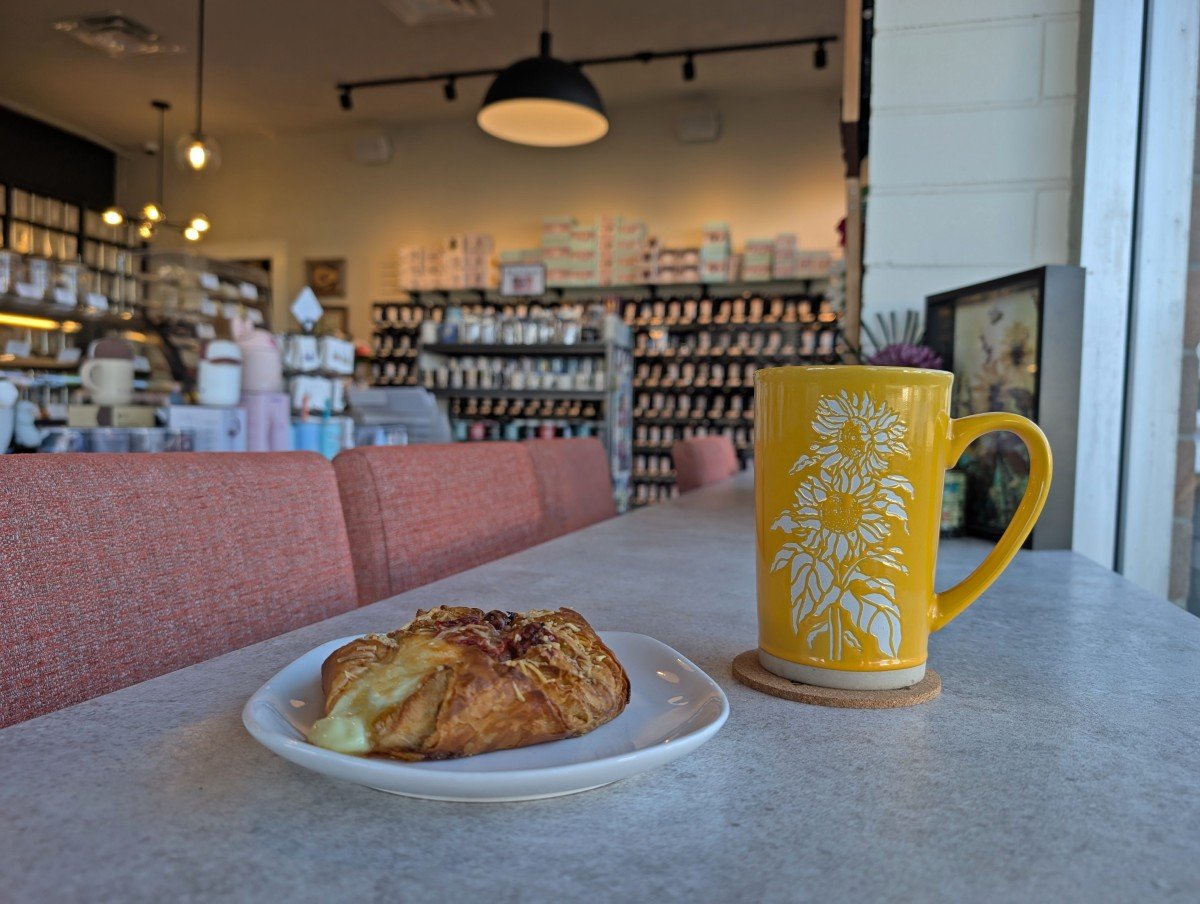
Recently celebrating 30 years of business, Stonehouse Teas is a Campbell River instutition. They have an incredible selection of house blended teas as well as sweet and savoury treats (the pinwheels were my fave).
Freyja is another well loved local cafe, offering the most most delicious croissants on the Island. The homemade fillings range from salted caramel, pistachio and yuzu lavender to passionfruit, chocolate and raspberry jam.
For dinner, you have to try Nhau Vietnamese Kitchen & Bar. It’s a modern take on Vietnamese in a stylish setting with incredible cocktails and all of the authentic flavours you’d hope for. Amazing!
Beach Fire Brewing Company is always a great shout for a drink; they have a full menu too. While I love the kettle sour, the High Tide Pale Ale seems to be a local favourite. There are weekly small-batch specials every Tuesday. Session Taproom + Kitchen is another great drinking destination.
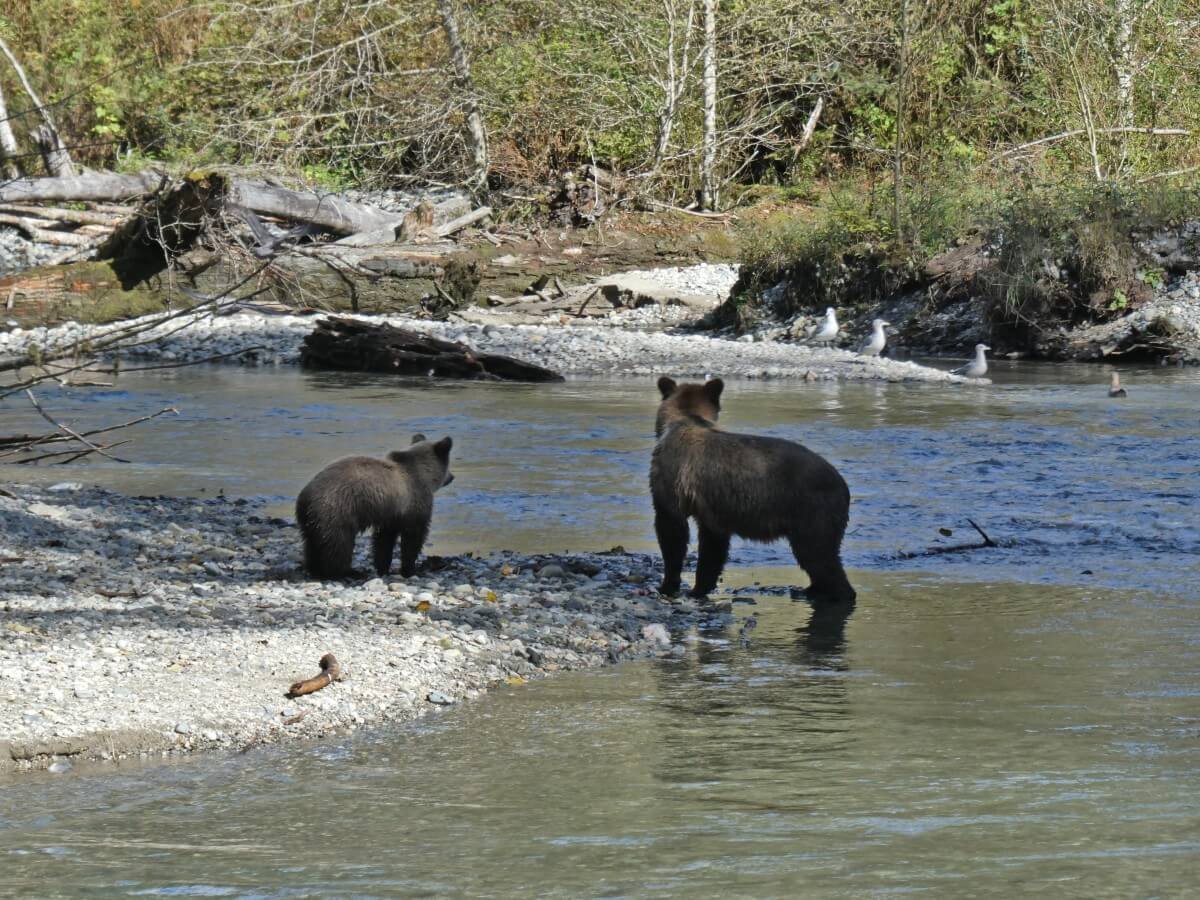
Other posts you may find helpful
Campbell River to Port Hardy Road Trip Guide: Best Places to Stop
23+ of the Best Things to Do in Courtenay
Nanaimo to Tofino Road Trip Guide: 15 Amazing Places to Stop
25+ Amazing Vancouver Island Waterfalls You Must Visit
Cape Scott Trail, Vancouver Island: Complete Hiking Guide
Where to Find Big Trees on Vancouver Island

Planning a trip to Vancouver Island?

Our Vancouver Island Travel Guide features an interactive map with 150+ of the best things to see and do.
The itinerary builder tool makes it easy to create your perfect trip.
Download the app and use offline while travelling!


One half of the Canadian/British couple behind Off Track Travel, Gemma is happiest when hiking on the trail or planning the next big travel adventure. JR and Gemma are currently based in the beautiful Okanagan Valley, British Columbia, Canada. Consider buying us a coffee if you have find any of our guides helpful!
